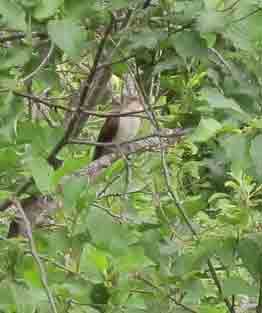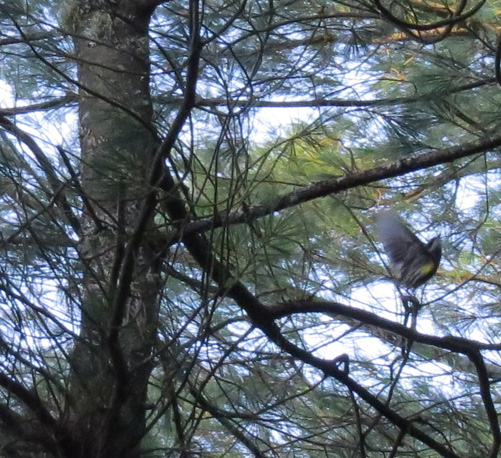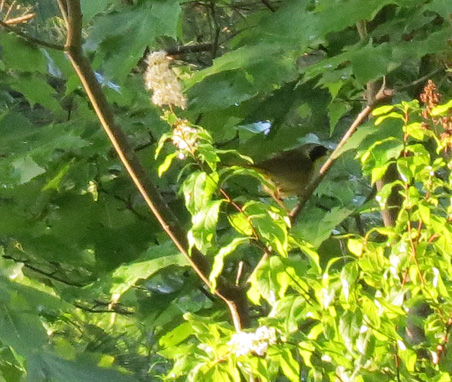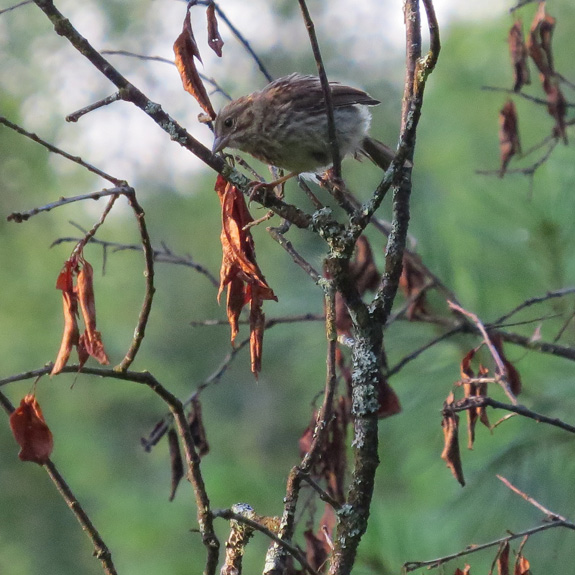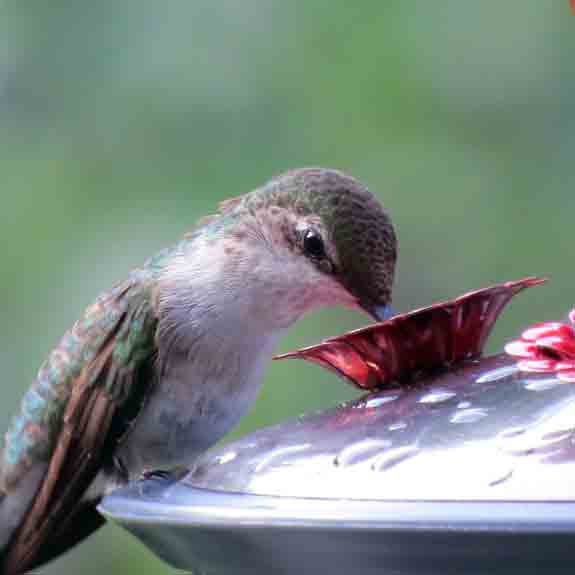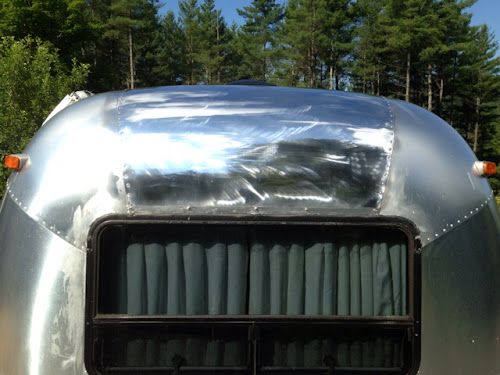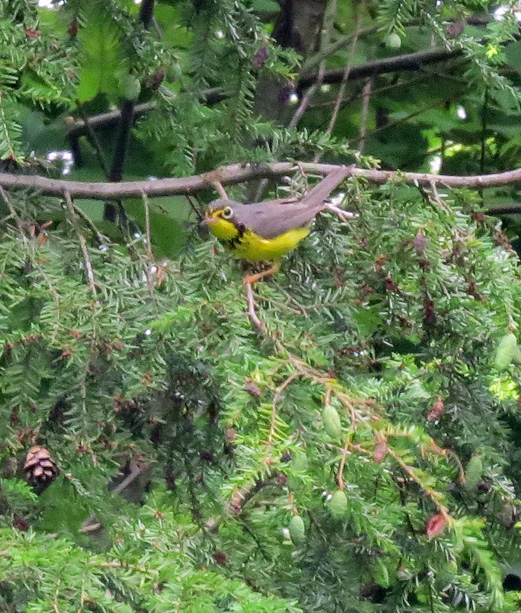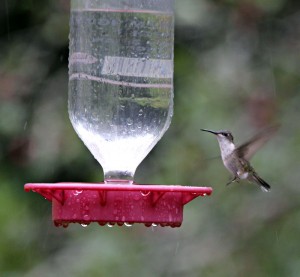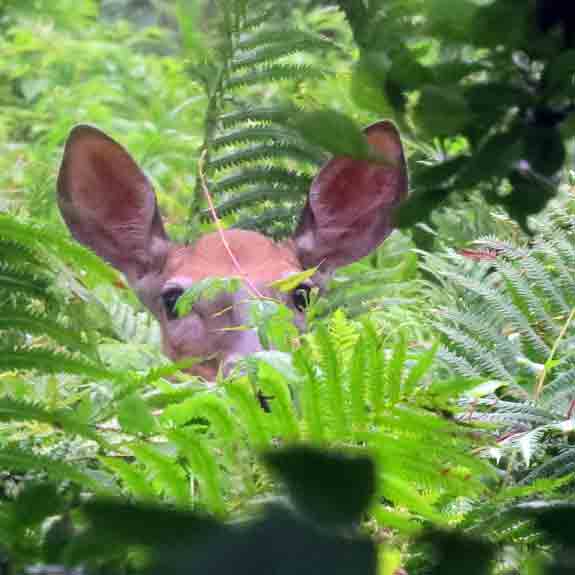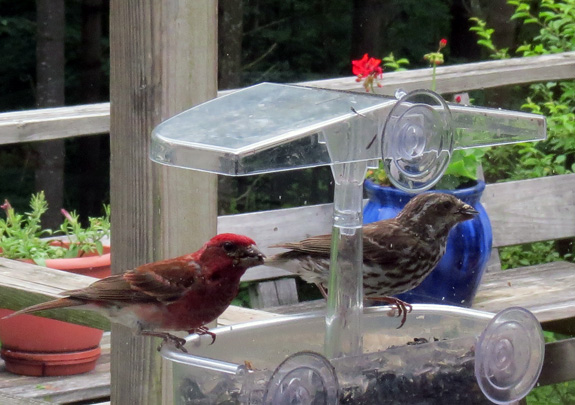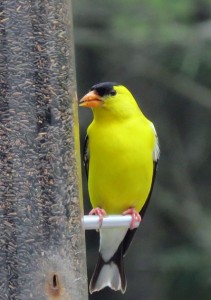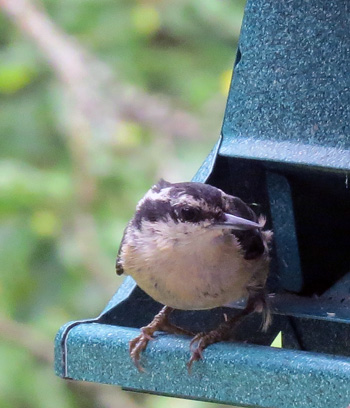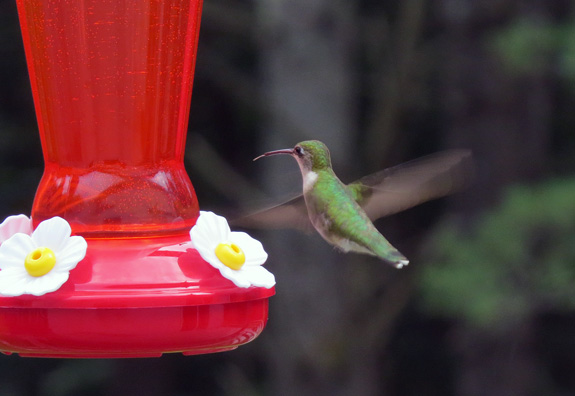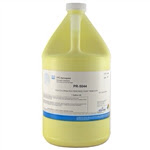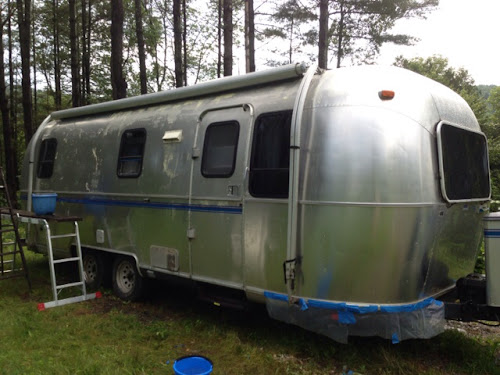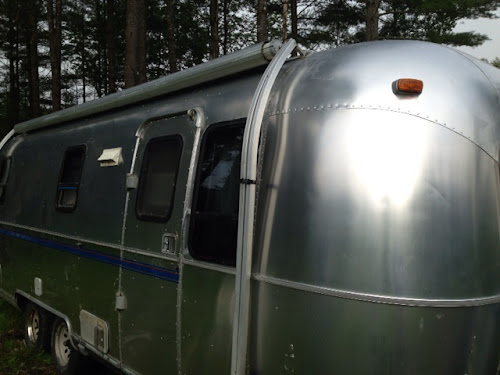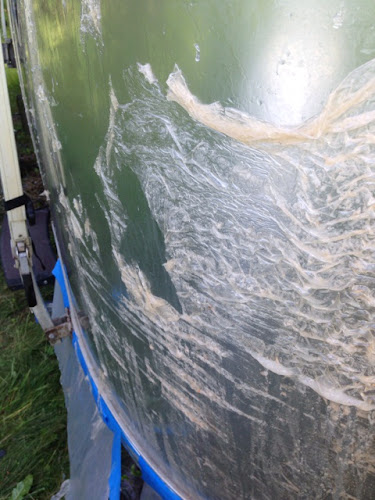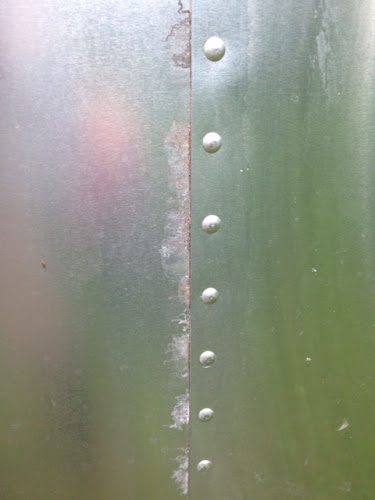As you know if you follow my Vermont Airstreamers blog, I’m in the midst of a major renovation project and thus, am spending little time for birding. This morning, I was tempted to spend an hour or two early at North Branch Nature Center, seeing if I could run into the Black-billed Cuckoo they have been hearing nearly daily. I have been down there on several occasions recently with no luck — and today I decided to press on and get some errands done downtown. I came home with my supplies for the Airstream project and after coffee, headed out to strip some clear coat off two stubborn panels.
I had tested a couple of stripping compounds and had just started to check them when I heard a cuckoo sound just across the driveway and up in the woods. I ran to the garage to get my binoculars and Mary, whose window was open, said, “Was that a cuckoo?” I said it was and went up to look for a few minutes but it had ceased calling. I returned to my project since I needed to rinse off the stripper before it dried on. About then, the Black-billed Cuckoo called again from a different spot.
So, I had my cuckoo — a life bird and a County bird — but I was not satisfied because up to this point, have always seen the bird I log as a life bird. I know that hearing it is a positive ID and I worked for about another fifteen minutes, hearing the bird periodically. Finally, I decided to drop things, get the dog, and go for a little walk looking for it. And so we did, down the driveway and across the road where I last heard it. After ten minutes, I caught movement of a cuckoo-sized bird but had trouble finding it in the foliage. I finally got part of it in the binoculars just as it started a very soft co0-coo-coo. I fiddled with the camera, struggled to get it in the frame, and snapped off a couple of shots for a record. I grabbed the binoculars as a second cuckoo joined the first but they moved off before I could get the camera up again. They moved off, calling now and then, and the dog and I returned up to the trailer to get back to work.
Black-billed Cuckoos have been a nemesis bird for me now for several years – I can’t tell you how many trips I’ve made to look for them. And two just show up in our dooryard! Such is birding. I’m glad I got a good look and the photo – it feels more like a real life bird — number 357 and the second one this month.

